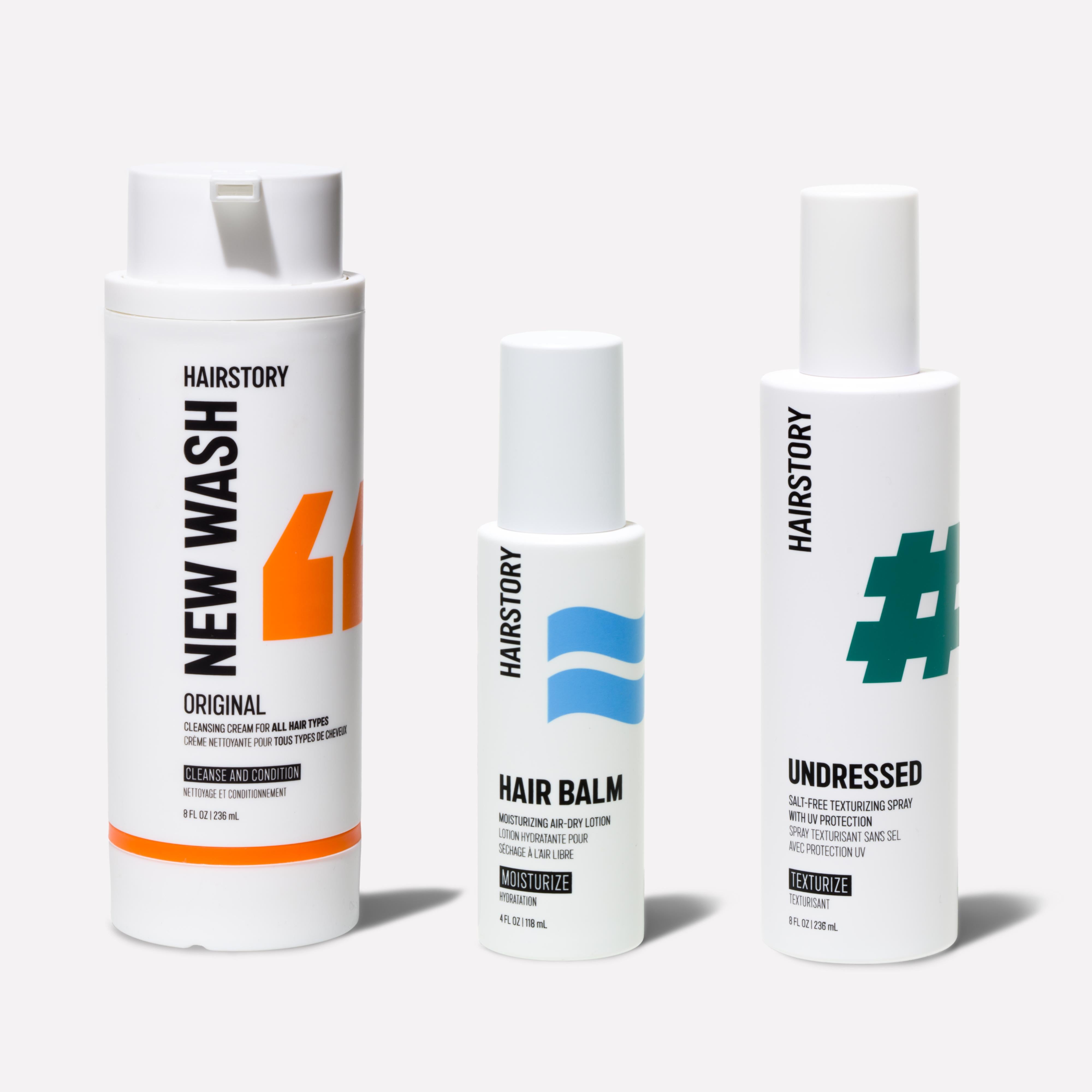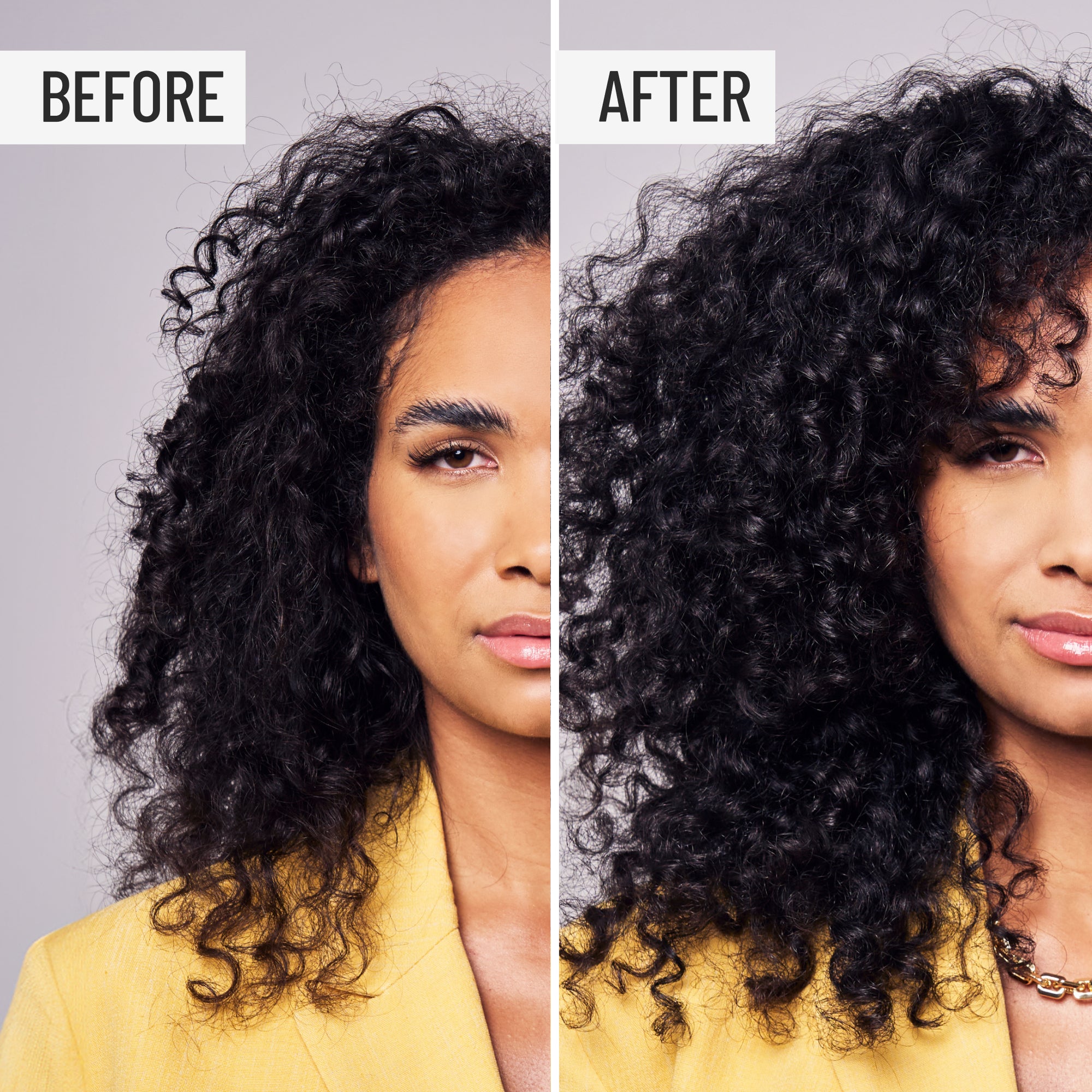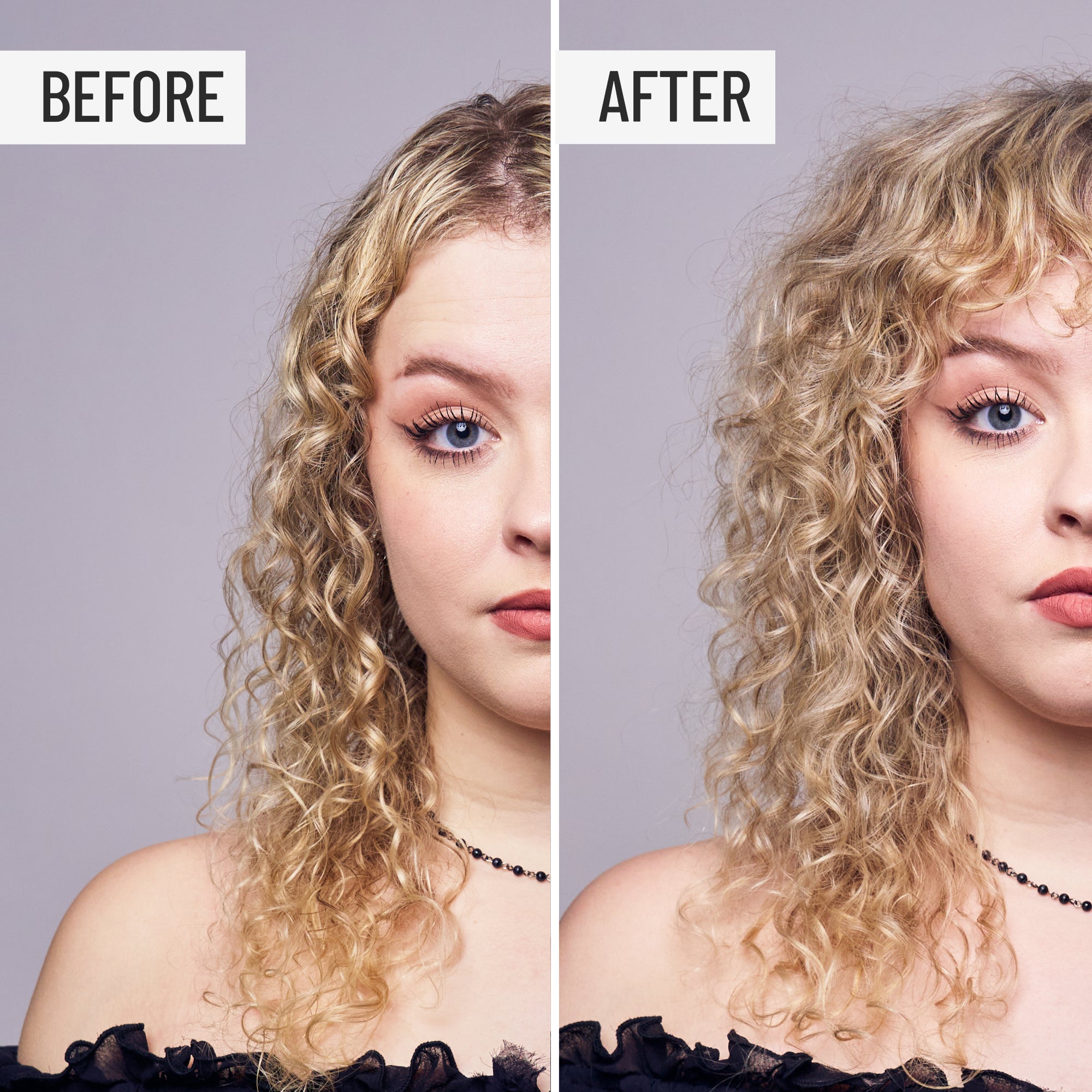Pool-Proof: How to Protect Your Hair From Chlorine
Ever since you were a kid, you’ve probably had questions about chlorine: Will it turn your hair green? Do you really need to rinse your hair before taking a dip in the pool – and after? And what’s the deal with swim caps?
If you plan to relax poolside this summer, it’s time to settle the matter: Does chlorine damage hair?
The answer isn’t pretty. Chlorine is a harsh chemical with disinfectant properties, making it essential for maintaining clean pools. However, while it’s great for pools, it can wreak havoc on your hair. It strips natural oils, leaving your strands dry, brittle, and vulnerable to breakage. It can also cause color-treated hair to fade faster and even alter its shade.
To enjoy your time in the water without compromising your hair's health, it’s important to understand the risks and take the appropriate precautions. In this guide, you’ll learn how chlorine affects your hair, discover ways to protect it from damage, and explore tips to rejuvenate your strands if you’ve already spent a little too much time in the pool.
What Does Chlorine Do to Your Hair and Skin?
To understand how chlorine affects your hair, understand what chlorine is: a chemical element with disinfection properties. Beyond keeping swimming pools clean and bacteria-free, chlorine can purify drinking water, disinfect home surfaces, and protect crops from pests.
While it’s great for pools, that disinfectant property doesn’t bode well for your hair and scalp. Chlorine can:
- Strip the natural oils from your hair, leaving it dry, brittle, and dull – which can lead to hair damage like split ends.
- React with color and dyes, causing them to fade much faster than they would naturally – or changing the color altogether. (Yep, the whole “chlorine turns hair green” thing is partially true. This happens when copper deposits in the water are oxidized by the chlorine and then bond with proteins in your hair.)
- Remove oils from your skin, including your scalp, which can cause dryness, irritation, and itchiness.
- Make your strands more porous, which makes it hard for them to retain moisture and more vulnerable to impurities.
Chlorine can damage any kind of hair, but some types are more vulnerable than others. Be especially careful if your hair is:
- Fine
- Colored or bleached
- Dry or damaged
- Chemically treated or permed
- Naturally Blonde
Signs of Chlorine Damage on Hair
Chlorine can have a significant impact on your hair, leaving behind telltale signs of damage. If you’ve spent time in chlorinated water, watch for these common symptoms of chlorine-damaged hair:
- Dry, brittle strands that break easily.
- Split ends and weakened hair shafts.
- A rough, straw-like texture.
- Faded or altered hair color, especially in dyed or chemically treated hair.
- Greenish tint in lighter or blonde hair caused by chlorine reacting with metals.
- Excessive tangling and difficulty managing your hair.
- Dry, itchy, or flaky scalp.
How to Protect Hair From Chlorine Damage
If you want your strands to stay healthy and hydrated, it’s clear: Protecting hair from chlorine is essential—and knowing how to get chlorine out of hair is just as important for maintaining its health and shine.
1. Avoid Getting Chlorine in Your Hair
Maybe it’s obvious, but it’s worth stating: The best way to protect your hair from chlorine is by keeping it out of chlorinated water. When you’re relaxing in the pool, tie up your hair in a braid, ponytail, or topknot and aim to keep your head out of the water as much as possible. If your hair doesn’t come in contact with the water, it can’t get damaged!
2. Add a Barrier Between Your Hair and the Water
OK – keeping your head out of the water isn’t always realistic, especially in the summer heat. You can also limit chlorine exposure with a swim cap. Swim caps don’t keep your head entirely dry, but they can limit the amount of chlorinated water that comes in contact with your hair.
If you aren’t up for donning a swim cap, you can also spread a layer of coconut oil on your hair, which keeps the chlorine from sitting directly on your strands – and provides a healthy dose of moisture as well.
3. Rinse Your Hair Before Getting in Chlorinated Water
Take advantage of those poolside showers and thoroughly rinse your hair with fresh water before hitting the pool. Dry hair is like a sponge – it soaks up water quickly, but once it’s saturated, the absorption slows. By soaking it with fresh water first, your hair will be less likely to take in much of the chlorinated water.
4. Rinse Your Hair Immediately After the Pool
Even if you protect your hair from chlorine, make sure to rinse well after getting out of the pool – especially if you won’t be able to do a full wash for a while. Avoid letting chlorine and other pool chemicals dry in your hair, which makes them nearly impossible to completely remove..
5. Wash as Soon as You Can
Rinsing is a great first step, but it’s also important to wash your hair as soon as you can after a swim session. Choose a hair cleanser that can remove chlorine — like New Wash — and replenish moisture with a leave-in conditioner.
How to Fix Chlorine Damaged Hair
If you swim regularly, you may already have some chlorine damage. Here are several things you can do to restore health and moisture.
1. Clarify Your Hair
Chlorine can stay in your hair even after you’re out of the water, and if you frequent the pool, it can build up over time. Choose a detergent-free cleanser that specifically works to remove the chemical from your strands. New Wash, for example, gently dissolves chlorine and respects your hair’s natural protective barriers.
2. Replenish Moisture
Chlorine-damaged hair may become dry and brittle, so rejuvenating it requires a good moisturizer. But damaged hair needs more than a traditional conditioner – it requires a total shift in your typical routine.
Here’s the deal: When you wash with conventional shampoo, you strip away the hair’s natural oils. Then, the conditioner replaces that moisture. But by washing with a detergent-free cleanser instead, you can supplement your scalp’s oils naturally, locking in long-term moisture.
In addition, try a more intense moisturizing treatment, like Hair Balm, as often as you need it. And don’t forget about your scalp – try massaging some argan oil or aloe vera on your scalp to keep it moisturized, too.
3. Be Extra Gentle
If you’ve spent a lot of time in chlorinated water, your hair may have damaged ends. While you can’t reverse what’s already been done, you can minimize further damage by scheduling an appointment with your stylist to trim split ends – and keep up with regular cuts.
Then, going forward, be gentle on your strands! Opt for a wide-tooth comb instead of a fine one; avoid excessive heat styling (make sure to use a heat protectant when you do use hot tools), and stay away from tight elastics that can cause breakage and strain roots. With these precautions and a focus on chlorine hair protection, you can keep new growth healthy and strong.
They say ignorance is bliss, but ignoring the harmful effects of chlorine can cause serious damage to your hair. By prioritizing chlorine hair protection, you’ll make it through the summer with healthy, strong strands – and without even a hint of green. You’ll be the one to envy.































